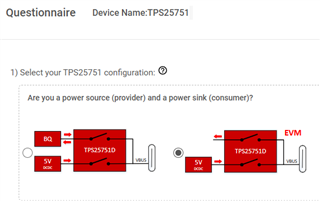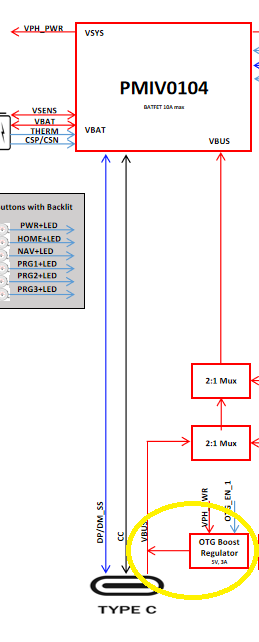Tool/software:
Hi,
We are planning to use USB PD controller TPS25751 in one of our designs. Please find attached the USB architecture block diagram for your reference.
A brief description about the architecture:
- The design demands 4 USB ports, out of which 3 are USB SS ports. The qualcomm processor supports only one USB port. In order to support multiple USB ports, a PCIe to USB bridge is used.
- There are two Type C ports(Primary and secondary) in the design with full SS support
- One of the Type C ports(Primary port) is directly interfaced to the processor as Primary USB for download and device mode operation
- There are 4 power input sources:
- 2 Type C ports, out of which one supports PD and Display over Type C
- One Dock interface with 27W input power with USB SS/2.0 interface.
- One expansion port with 12V input for charging and USB 2.0 interface
The OTG power supplies to the Type C connectors are provided through external OTG power supplies.
Will there be any USB compliance issues with this architecture? We are looking for IEC62680 compliance tests as per the latest USB standards.
Have you come across any USB compliance issues by using external OTG power supplies or PD controllers?
Thanks,
Naveen



